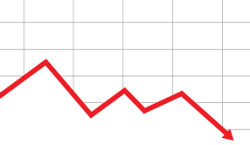

THE history of slot machines is a chronicle of technological innovation and evolution; From simple mechanical devices to breathtaking digital graphics and immersive gaming experiences: this journey takes us from the beginnings in brick-and-mortar gaming arcades through the first online platforms to the most modern 3D experiences. What the future can bring? You can find out here.
Originating in the late 1800s, the traditional one-armed bandit was a mechanical slot machine with three spinning reels. Each reel had images of fruit, bells or numbers, and if a certain combination of images appeared after a spin, the player won a prize, often in the form of coins.
Technically speaking, the mechanics of these devices were surprisingly simple. A coin insertion activates the machine and the “arm” or lever sets the reels in motion. A complex system of springs, levers and other mechanical components ensured that the rollers stopped randomly. In contrast to some of the more arcade-oriented slots of today, it wasn’t about your own abilities or even skills on slot machines back then.
With the advent of the Internet and digital technology in the 1990s, it was only a matter of time before slot machines found their way onto the Internet in the form of online slots at non GamStop casinos. The first online slots were simple digital replicas of their real-world counterparts.
The basic principle remained the same – spin the reels and hope for a winning combination. But instead of mechanical reels, there were now digital symbols rotating on a screen. RNG (Random Number Generator) technology has been implemented to ensure random results. The gaming experience itself was no different, apart from the fact that, unlike mechanical models, it became difficult or impossible to manipulate online slots. Nevertheless, there are also some slot machine tricks for modern online slots that can be used to get even more out of the digital gaming experience.
Some traditional slot machine manufacturers without GamStop recognized the potential of online gambling very early and adapted. One such company is the Gauselmann Group with its well-known Merkur brand, which now also includes other developers such as Gamomat and Edict.
The Gauselmann Group, founded in 1957 by Paul Gauselmann, is a prime example of evolution in the slot machine industry. Originally from Espelkamp in North Rhine-Westphalia, the brand has developed into an internationally recognized name in the gambling world.
The Gauselmann Group, founded in 1957 by Paul Gauselmann, is a prime example of evolution in the slot machine industry. Originally from Espelkamp in North Rhine-Westphalia, the brand has developed into an internationally recognized name in the gambling world.
The early years of the Gauselmann Group were characterized by the production and distribution of jukeboxes. But Paul Gauselmann’s vision went further. He soon developed his first slot machine: the “Merkur B”, which was to be seen as a pioneer for the Merkur brand. This success led to the establishment of additional production facilities and the expansion of the product portfolio.
In the following decades, numerous slot machines were developed for the physical market under the Merkur brand name. Merkur’s machines have always stood for quality, innovation and a fair gaming experience. They quickly spread in arcades, bars and casinos and became an integral part of the online gambling scene.
With technological advances and the advent of the Internet in the 1990s and 2000s, the Gauselmann Group faced the challenge of adapting to the new digital landscape. And it mastered this challenge with flying colors. The online versions of the classic Merkur slots, such as “Triple Chance” or “Eye of Horus”, quickly found favor with players and also established the brand in the digital world.
The best Merkur slots retained the core features and familiar design of their physical counterparts, but also offered new features and mechanics that are only possible in a digital format. A special focus was also placed on security and fairness, using the most modern technologies and certifications to ensure players a safer and more graphically sophisticated experience.
Today, the Gauselmann Group not only stands for classic slot games, but also for a diverse online offering that is constantly being expanded and modernized. It is expected that with advances in technology, such as augmented and virtual reality, the Merkur brand with its subsidiaries such as Blueprint-Gaming, Edict and others will continue to be at the forefront of graphic innovations and trends in the gaming industry.
The 2000s brought with it a tsunami of technological and graphical innovations that were to fundamentally revolutionize slot machine development and thus also the graphical development of slots.
Virtual Reality (VR) is the next big step in the evolution of slot design. VR slots place players in a fully immersive 3D world where they can move and interact freely rather than just staring at a screen.
The VR market in the online gaming sector is still relatively small and is in its infancy; But with headsets becoming increasingly affordable, more and more computing power from modern hardware and development studios making billions in sales in the iGaming industry, major technological leaps in this area will not be long in coming.
The evolution of slot graphics is an impressive journey from simple mechanical machines to cutting-edge digital wonders. With each technological breakthrough, games became more immersive, exciting and entertaining.